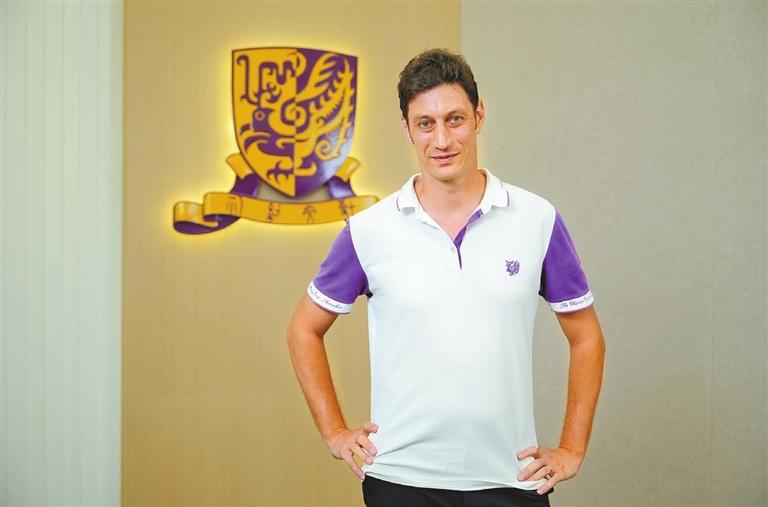

Wang Jingli wangjingli0715@163.com FRENCH Sinologist Aurélien Boucher can describe Shenzhen’s layered history with precision that might surprise many longtime residents of the city. He effortlessly details the Cantonese heritage of Bao’an District, the ancient fortress in Dapeng New Area, and the Hakka traditions of Longgang District — a level of local knowledge uncommon for someone who arrived in the city less than a decade ago. An assistant professor at the School of Humanities and Social Science at The Chinese University of Hong Kong, Shenzhen (CUHK-Shenzhen) since 2016, Boucher teaches general courses on Chinese sports history, humanities, and data science. His background includes doctoral studies at Nantes University in France and work at the Nantes Sociology Research Center. Boucher’s interest in Chinese culture began at the age of 14 when he started learning to play table tennis from a retired member of the Beijing table tennis team. During training sessions, Boucher heard stories about China. Since then, his curiosity about China gradually expanded. In 2004, 19-year-old Boucher embarked on his first visit to China to participate in a table tennis internship program in Beijing, an experience that inspired him to pursue academic studies in the field. Boucher visited many places in China before settling down in Shenzhen. He spent two years conducting field research in Qingdao, eastern China’s Shandong Province, for his doctoral dissertation titled “La Naissance du Sport en Chine (The Birth of Sport in China).” Later, he served as an assistant director at the Sino-French Research Center of Tsinghua University in Beijing. Before coming to Shenzhen, Boucher learned about Longgang District and fun places from his wife’s friend, a Shenzhen resident. After moving to Shenzhen, Boucher got a chance to gradually experience Cantonese culture and the culture of the Guangdong-Hong Kong-Macao Greater Bay Area. Some people regard Shenzhen as a cultural desert, given that it is a young city built on manufacturing and technology. However, Boucher believes that this is a misunderstanding. “Bao’an District has Cantonese culture. If you visit Dapeng’s ancient fortress, you will know there is also a long-standing history. The misunderstanding might come from the fact that Shenzhen has enjoyed rapid development since reform and opening up. In fact, Shenzhen has a deep culture,” said Boucher. Boucher spoke highly of Shenzhen’s investment in cultural facilities. During his time in Shenzhen, he found more museums being built and more cultural activities being held. Boucher encourages people to visit museums to learn more about the city. Nantou Ancient Town is Boucher’s favorite cultural destination in the city. “The ancient town is an interesting place with museums and historical sites, and it also introduces merchants. I think the place is also a representative example of urban planning,” said Boucher. In recent years, Shenzhen has held many sports events, including international games such as the FIBA Women’s Asia Cup and the AFC U20 Asian Cup. Boucher observed that this provides a good opportunity for players from around the world to experience the city. “I think Shenzhen is a city perfectly combining the West and the East. We can find traditional sports items and new sports projects here,” Boucher added. | 
